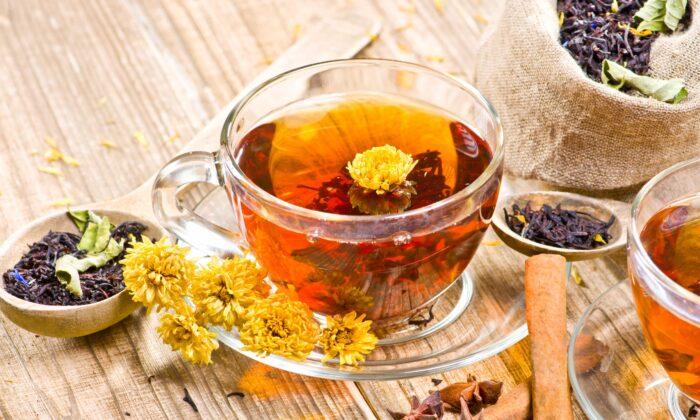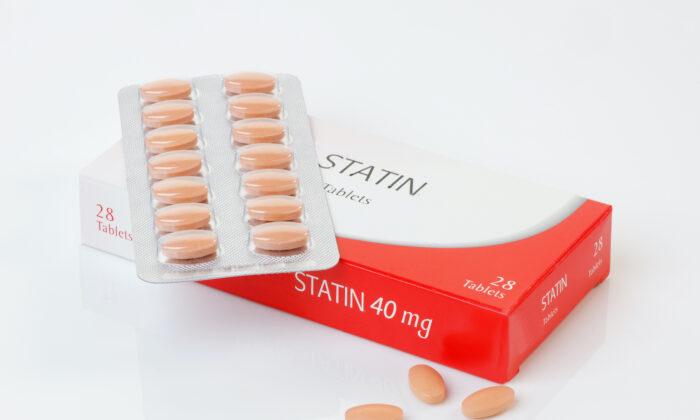Blood sugar imbalance has short- and long-term effects on the body. When blood sugar is well-controlled, we have better control over our energy levels, mood, cravings, weight, and overall performance.
In the short term, poorly controlled blood sugar levels can cause brain fog and low energy, and make us feel grumpy. Over time, out-of-control blood sugar can lead to prediabetes, Type II diabetes, and many of the health complications associated with diabetic conditions.
There’s a lot of information and lifestyle advice about treating and preventing diabetic conditions. Upon being diagnosed with prediabetes or Type II diabetes, trying to understand this information can be overwhelming. Between testing, monitoring, taking medications, and measuring food intake—and timing it all—there’s a lot to manage. It may even be hard to imagine how to carry on with regular life while learning the ins and outs of dealing with this new diagnosis.
Regardless of where we are in managing our blood sugar levels, there are simple, affordable things we can do to help to improve the situation. Whether we’re just starting to notice symptoms of high or low blood sugar levels, or we’ve been managing a diabetes diagnosis for many years, some common herbs and spices can help to keep us in balance.
Symptoms of Blood Sugar Imbalance
Blood sugar imbalance can be either high blood glucose levels known as hyperglycemia or low blood glucose levels known as hypoglycemia. While each of us may experience these sensations a little differently, common symptoms include headaches, blurred vision, weakness, fatigue, irritability, and brain fog. Other telltale signs of hyperglycemia are increased thirst and frequent urination.5 Gold Nuggets for Maintaining Blood Sugar Balance
Throughout the day, as we consume foods and beverages, our blood sugar levels change and adapt to our needs. Keeping blood sugar in balance allows the body to perform more efficiently. Although there’s a myriad of information and sometimes conflicting advice out there about maintaining blood sugar balance, there are five universal gold nuggets throughout the information that appear to be true:- Stay hydrated.
- Have a good sleep schedule.
- Manage stress appropriately.
- Be physically active.
- Maintain a healthy weight.
Potential Causes of Blood Sugar Imbalance
Some of us may have a predisposition to blood sugar imbalance or underlying health conditions that make managing blood sugar levels more difficult.Lifestyle, activity, and diet also often play a large role in the ability to maintain blood sugar balance. Even the environment can have a profound effect on our blood sugar levels.
While not all of these factors are within our control, every positive step may benefit blood sugar levels.
Cutting down on fast food or limiting highly processed foods is something we can do to help ourselves with blood sugar control.
Learning ways to manage stress is another example.
Staying active during the day not only helps control blood sugar levels, but also contributes to better sleep quality. Better sleep is known to improve blood sugar balance.
Plant-Based Medicines to Treat Blood Sugar Imbalance
Cinnamon
Cinnamon is a useful and delicious culinary spice that comes from the bark of cinnamon trees. Most of us probably have cinnamon in the spice cupboard, even though we may not use it regularly.Warm and sweet, cinnamon is sometimes associated with holiday baking. It can easily be incorporated into the diet by simply sprinkling it on foods, adding it to beverages, or mixing it into spreads such as honey or jam.
Cinnamon Constituents and Healing Activity: Evidence-Based Research
Evidence continues to demonstrate that cinnamon and its bioactive compounds and biological activity exert beneficial effects on blood sugar levels.How to Use Cinnamon
With cinnamon, a little goes a long way. A pinch here and there throughout the day may be enough to stabilize blood sugar levels. Cinnamon supplements are available. It has also shown long-lasting effects of up to 12 hours.Including cinnamon in your morning routine can help to keep your blood sugar levels stable throughout the day. A simple pinch in your morning tea or coffee, a sprinkle on toast, cereal, or oatmeal, or a dash in a breakfast smoothie is often enough.
Again, a small amount in the evening may help to balance blood sugars overnight. A pinch in an evening beverage or dusting on some fruit will not only taste wonderfully warm, but it may also keep your glucose levels even.
As with all good things, too much over long periods might be less helpful. Although a very safe food in low quantities, avoid taking more than a teaspoon of cinnamon daily, as high doses can have negative effects.
Ginger
Ginger, or Zingiber officinale, is one of the most popular and widely consumed spices in the world.It grows as a rhizomatous plant in tropical regions. The bright, hot flavor of ginger is used in many cuisines and styles of cooking. Ginger can be found in most grocery stores and health food stores as fresh roots and dry powder, as well as in candied form. Look for organic ginger products when available.
Historically, ginger has been used as an herbal medicinal remedy for a variety of health issues such as vertigo, nausea, and vomiting. It aids in digestion and constipation. Ginger also has anti-cancer, anti-clotting, anti-oxidative, and anti-inflammatory actions.
Ginger Constituents and Healing Activity: Evidence-Based Research
Due to the long historical pharmacological use and extensive bioactive compounds, ginger continues to be investigated for its effects on blood sugar. A study on ginger conducted in 2015 showed a significant reduction in fasting blood sugar and hemoglobin A1c, as well as other lipid proteins.How to Use Ginger
Since ginger is delicious and easy to find, including it in a blood sugar-friendly routine is inexpensive and safe, and provides many benefits.The complementary flavors of ginger work well in both sweet and savory dishes.
Fresh ginger pairs beautifully with garlic, a potent medicinal food as well. For convenience, a batch of raw, fresh ginger, with or without garlic, can be blended in a food processor and stored in a jar in the freezer. It’s then fresh and ready to add to soups, salad dressings, pilafs, marinades, smoothies, and beverages.
Dandelion
The long historical use of dandelion goes back centuries. This medicinal herb grows from the tropics to cool highlands and can withstand both drought and frost.Dandelion is used within ethnopharmacology and traditional folk medicines throughout the world, including in Europe, Russia, India, and China. A rich source of micronutrients, minerals, and vitamins, dandelion is often consumed as food. It’s wild harvested and cultivated in many parts of the world to this day. Currently, it’s predominantly produced in the eastern European countries of Bulgaria, Romania, Hungary, and Poland.
In the search for alternative and inexpensive medicines for the tremendous rise in Type II diabetes, dandelion may provide a compelling solution.
Rich in a variety of anti-diabetic properties and bioactive components, dandelion is also abundant, easy to grow, and widely available in several areas around the world. The pharmacological uses of dandelion may treat a wide variety of issues.
Dandelion Constituents and Healing Activity: Evidence-Based Research
A large review of the physiological effects of dandelion has demonstrated a series of anti-diabetic effects.Along with the nutritive and medicinal actions of dandelion, the bioactive components in dandelion have normalizing effects on blood sugar. These pharmacological actions are due to components such as sesquiterpene lactones, chicoric acid, taraxasterol, phenols, phenolic acids, and flavonoids.
How to Use Dandelion
While most of us know dandelion as a detested turf and garden weed, each part of the plant has compelling medicinal uses.Young leaves in spring are tasty in salads or used as a cooked green. Flowers in late spring and summer are surprisingly fragrant and make a lovely tea or salad garnish. Roots are bitter and best harvested in early fall.
Scrub the roots well. They’re quite pleasing when roasted and used in hot beverages, and are commonly used as a noncaffeinated coffee substitute. Alternatively, they can be chopped and dried for use in herbal teas or tonics. They can be used in decoctions, boiled rather than steeped like tea, to further extract their medicinal properties.
Harvest dandelions from areas known to be free of toxins, herbicides, and pesticides. While this plant may grow rampantly in lawns, ditches, fields, and fallow ground, source your dandelions from clean places. This will improve the quality of the recipes you make with dandelion.
Healing Herbal Blood Sugar Balancing Tonic
A great way to start the day, this tonic can be made in small or large quantities. The recipe includes apple cider vinegar, which also has evidence of balancing blood sugar levels.Not only does this recipe incorporate many blood sugar-balancing herbs and spices, but it’s also hydrating. The inspiration for the recipe is from a traditional switchel, a refreshing ginger-infused beverage that helps to replenish electrolytes and balance blood sugar levels.
We make this blood sugar-balancing tonic by decocting, or hard-boiling, the spices instead of simply steeping the ingredients like you would in making tea. The benefit of boiling the spices is that it extracts more flavor and beneficial compounds from the ingredients.
- 2 cups of high-quality water
- 1/2 teaspoon dry powdered ginger
- 1/16 teaspoon dry powdered cinnamon
- 1/2 teaspoon dry dandelion petals
- 1/4 teaspoon dry dandelion root
- 1 tablespoon apple cider vinegar (to add at the end)
- 1/4 teaspoon cumin seed
- 1/4 teaspoon fenugreek
- 1/4 teaspoon rosemary
- 1/4 teaspoon thyme
Place water and ingredients into a pot on the stove. Bring to a boil. Turn off the heat. Let sit for 10 minutes. Strain ingredients. Add 1/2 tablespoon to 1 tablespoon of apple cider vinegar.
Enjoy first thing in the morning or throughout the day. It may contribute to improved energy, mood, cravings, weight, and overall performance.
Initially, you may wish to use half a tablespoon or less of apple cider vinegar, especially if you don’t use this ingredient often. This may be a surprisingly powerful tonic for some people. When possible, try this recipe on a quiet day when you don’t need to be out and about. Sensitive people may want to stay close to a bathroom.
Always consult your medical health team before commencing new herbal medicines. This is particularly important if you take medications. Some herbs may be contraindicated with certain medications. Talk to a health care professional about your medications and herbal interactions.








